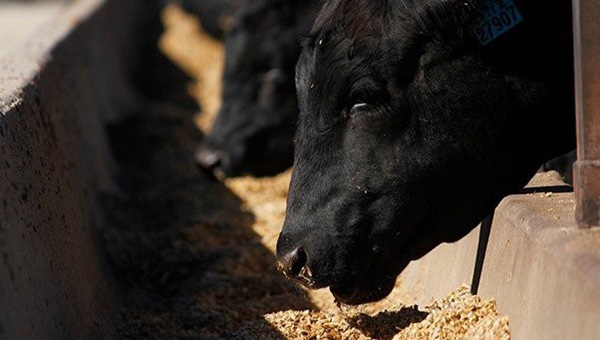Optimising transportation and lairage conditions for feedlot cattle – webinar preview
19 May 2022

Key points:
- A webinar hosted between Australian Lot Feeders' Association (ALFA) and Meat & Livestock Australia (MLA) will demonstrate the positive effects of short lairage times and fit to load procedures.
- Adhering to the Is the Animal Fit to Load? principles as articulated by MLA, will maximise animal wellbeing and quality of grainfed cattle being delivered to abattoirs.
- Preliminary results from an MLA funded study have shown that reduced lairage times significantly increase hot carcase weight.
On 1 June 2022, Australian Lot Feeders' Association (ALFA) and Meat & Livestock Australia (MLA) will host a webinar on optimising transportation and lairage conditions for feedlot cattle.
The webinar will cover a variety of topics including fit to load procedures, cattle transportation and short duration lairage trials. In addition, there will also be a presentation from the national heavy vehicle regulator on the regulatory environment and chain of responsibility laws.
Ahead of the webinar, MLA spoke with Dr John Langbridge from Teys Australia, Dr Melissa George of Bovine Dynamics, and Ben Wieland from Kilcoy Global Foods to get their insights into the topics the webinar will address.
Fit to load principles
In 2019, MLA released a new fit to load guide to help producers, agents, buyers and transporters decide if an animal is fit to be loaded for transport by road or rail. Called Is the Animal Fit to Load? the guide included information on:
- loading densities for livestock
- managing effluent
- establishing a clear chain of responsibility for all involved.
At the webinar in June, the fit to load principles will be discussed and their importance reiterated, as a method to self-regulate and a way to protect all animals in the supply chain.
Dr John Langbridge, General Manager Industry and Corporate Affairs at Teys Australia emphasised the importance of producers and processors following the fit to load principles.
“First and foremost, taking care of animals is paramount to our entire industry when loading and transporting,” John said.
“Correctly preparing livestock for transport is a vital part of any journey. Well prepared animals travel better, are less stressed and animal welfare issues are less likely to occur.
“On top of this, it results in optimising the quality of the carcase and retail beef cuts. Remember to consult with your veterinarian if you have doubts over an animal’s fitness to travel.”
Short lairage trial
Another exciting development that will be discussed at the upcoming webinar are the outcomes of the MLA funded transportation and short duration lairage projects. The key findings presented will centre around the impact on:
- carcase weight
- food safety
- MSA grading parameters
- animal welfare.
Following on from a pilot trial in 2016–17 on 400 head of domestic feedlot heifers which reported significant economic benefits (3kg extra of hot carcase weight) to minimising time in lairage in grainfed cattle to less than three hours.
Dr Melissa George of Bovine Dynamics, who conducted the first trial, noted that a subsequent larger study needed to be undertaken in order to provide a more robust dataset to drive industry adoption of the practice.
“As of March 2022, we compared three hours, versus 15 hours, versus 27 hours duration of lairage for over 2,000 head of cattle. What we have seen so far is a replication of the positive benefits identified in the pilot trial but on a commercial scale,” Melissa said.
“We have seen that reduced lairage duration of feedlot cattle prior to slaughter has economic, animal health, and welfare benefits across the summer months.
“The study has also placed a large emphasis on carcase microbiology to investigate whether short lairage alters food safety risks. So far, we found no difference between the three durations of lairage for total plate counts, coliforms, E. coli, and Salmonella spp., which is very promising.
“A second phase of the study is due to commence during the cooler months and provide more data on lairage in regard to food safety.
“The final data set will be used by MLA and ALFA to make best practice recommendations underpinned by science about time in lairage effects on animal welfare and food safety to federal government on plant veterinarians and the broader industry. It’s exciting for the industry.”
The short lairage trial also promises significant benefits for processors like Kilcoy Global Foods according to Ben Wieland, Livestock Logistics and Relationship Officer.
“We wholeheartedly back the short lairage trials being run by MLA and Bovine Dynamics. At Kilcoy, we are strong believers in rolling out short lairage times across the whole industry. The trial that’s currently underway is showing massive benefits for producers and processors,” Ben said.
“So far at Kilcoy, shorter lairage time is resulting in healthier, heavier and less stressed cattle. The key benefit is a reduction in dark cutting percentages and ultimately, much better eating quality.
“This is especially obvious compared with cattle that are held for over 12–24 hours. All factors result in economic benefits to our partners and suppliers which is of course critical for the sustainability of our industry.
“The trials have found that you don’t need to hold cattle in processing centres for 24 hours, ideally, it’s in your best interest, as well as the animal’s best interest to keep them there for as short of time as possible.
“I would encourage all processors to attend the webinar and find out how short lairage times will strongly benefit them and the industry as a whole.”
The webinar topics will be delivered over a live streamed two hour webinar session at 12:30pm (AEST) on Wednesday 1 June 2022.


